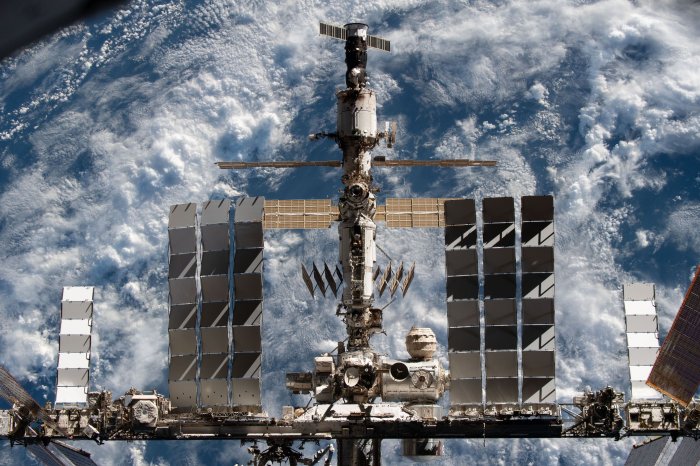1 of 3 | NASA's Jet Propulsion Laboratory plans to send the Psyche spacecraft, shown in an illustration, to a distant metallic asteroid in 2022. Image courtesy of NASA
ORLANDO, Fla., April 6 (UPI) -- NASA's Psyche asteroid spacecraft is coming together on schedule in California for an August 2022 launch from Florida to explore the giant hunk of metal that circles the sun between Mars and Jupiter.
The space agency's Jet Propulsion Laboratory in Pasadena took delivery of the main body of the spacecraft, or chassis, in March and started assembly work, Robert Mase, deputy project manager for the nearly $1 billion mission, told UPI via email.
"The next big milestone comes when it ships to NASA's Kennedy Space Center in spring 2022," Mase said.
Technicians and engineers now will begin final assembly, he said.
That includes outfitting the craft with the sensors needed to analyze the metal space object, including a variety of imaging equipment that can determine types of metal or other substances based on reflected light or radiation.
Plans call for the spacecraft to fly past Mars to gain momentum from the Red Planet's gravity in 2023, arriving in orbit at the asteroid in 2026 for at least two years of scientific observations.
The space agency chose the target because asteroid 16 Psyche is unique. Most asteroids are clumps of ice and rock rather than metal, but even some telescopes on Earth have been able to identify Psyche as primarily metallic.
Italian astronomer Annibale de Gasparis identified the asteroid in 1852 and named it after the Greek goddess Psyche.
The asteroid is about 120 miles across, or 1/16th the size of Earth's moon -- that's among the biggest known asteroids in the solar system.
Scientists working on the mission believe 16 Psyche could have been the core of a small planet, and it could help them understand Earth's core, said Lindy Elkins-Tanton, a planetary science professor at Arizona State University and principal investigator for the Psyche mission.
"Humans can never visit the metal core of the Earth or any other rocky planet because of the extreme heat and pressure, but the core ... is the source of our magnetic field," Elkins-Tanton told UPI in an email interview.
By studying 16 Psyche, "we'll learn about planet formation and also about what is inside our Earth today," she said.
The mission aims to determine more details about the makeup of the asteroid, and what its surface is like, she said.
"All information [gained] will be both unique in human knowledge and useful to all later studies and interactions with asteroids," Elkins-Tanton said.
Such interactions could, in the future, include mining asteroids or attempting to deflect one that threatens a disastrous collision with Earth.
The spacecraft is unique partly because it has a low-thrust solar electric propulsion system, said Robert Curbeam, a former astronaut and senior vice president at Colorado-based Maxar Technologies, which made the propulsion system and chassis.
Many deep-space probes have used chemical propellants, according to NASA.
Maxar has built components for many spacecraft that orbit nearer the Earth, but the company is adapting some of those for the deep space Psyche mission, Curbeam said.
"Maxar had to optimize the solar panels to operate specifically in a low-light environment," for example, he said.
In a first for the company, the craft also has thermal louvers -- shutters with moveable slats -- that can open or close to control the spacecraft's temperature, he said.
NASA has contracted with SpaceX to launch the Psyche mission aboard the powerful Falcon Heavy rocket.
The International Space Station is pictured from the SpaceX Crew Dragon Endeavour during a flyaround of the orbiting lab that took place following its undocking from the Harmony module’s space-facing port on November 8. Photo courtesy of NASA
















